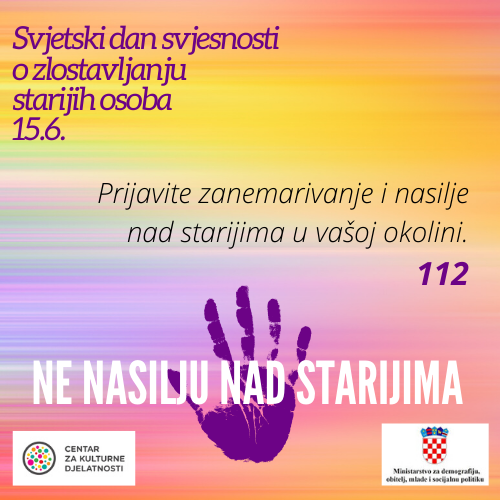The campaign “No to violence against the elderly” was implemented with the financial support of the Ministry of Demography, Family, Youth and Social Policy during 2020.
The aim of the video animation was to point out the importance of recognizing, reacting, eliminating and preventing violence against the elderly in the Republic of Croatia. The animation informs the public about the types and consequences of violence against the elderly.
Through a public campaign and by sharing and showing video animations, we informed the public about the importance of recognizing, solving and preventing this problem, which happens every day, but is insufficiently researched and remains a taboo topic in the public.
VIOLENCE AGAINST THE ELDERLY
Elder abuse can be defined as any behavior that harms the elderly in some way. It refers to the violence, harassment and neglect that older people may experience from family members or other people who have power among them.
We distinguish physical, mental, sexual, financial, and spiritual neglect. Factors contributing to violence against the elderly can be: cognitive impairment, nursing stress, functional disability, addictions, psychopathology of abusers, poverty, and poor social network.
In 90% of cases of violence against the elderly, the perpetrator was a family member.
CONSEQUENCES OF VIOLENCE AGAINST THE ELDERLY
The consequences of violence for the victim are impaired physical and mental health, loss of material security and death. Victims very rarely report violence because they are helpless, have a strong sense of shame, or are afraid of the consequences.
Timely recognition of the problem of violence against the elderly is crucial. All officials, doctors, experts in social care centers, associations and religious communities must report the abuse in order to be able to intervene in a timely manner and provide immediate psychosocial assistance to the victim, but also to the perpetrator.

